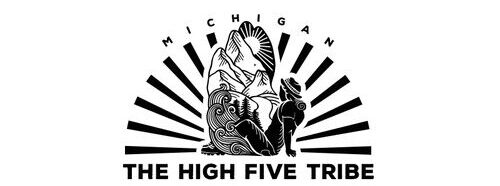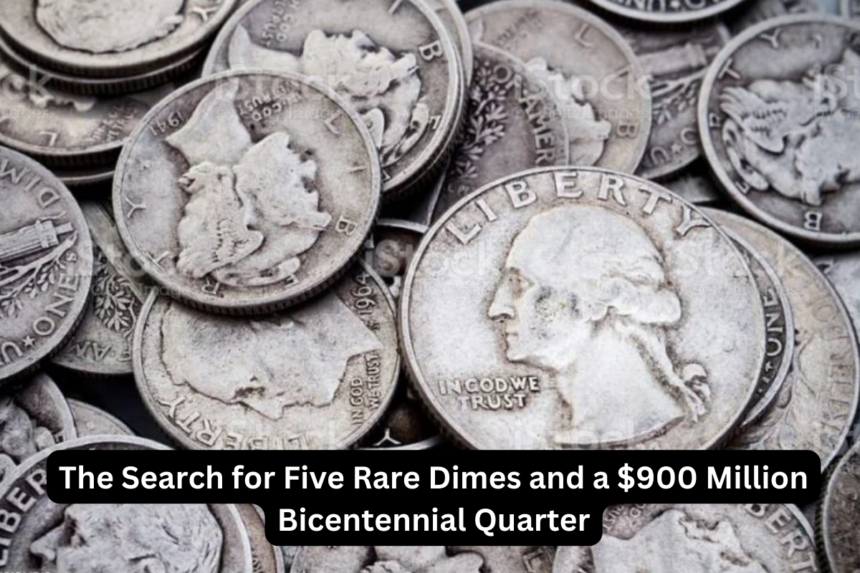Introduction:
Numismatics, the study and collection of coins, often uncovers hidden treasures that lie in plain sight. Among these treasures are five rare dimes and one remarkable Bicentennial Quarter, each potentially worth up to $900 million. The search for these valuable coins is not only an exciting pursuit for collectors but also an intriguing possibility for anyone who handles everyday change. Here’s an in-depth look at these rare coins and how you can join the hunt.
The Fabulous Five Dimes
These five dimes have gained legendary status due to their rarity and historical importance. Each of these coins has unique attributes that make them extraordinarily valuable:
1. 1916-D Mercury Dime
Background: The Mercury Dime, officially known as the Winged Liberty Head dime, was designed by Adolph A. Weinman and minted from 1916 to 1945. The 1916-D is one of the most coveted coins in the series.
Mintage: Only 264,000 of these dimes were minted, making it extremely rare.
Features: The coin features the profile of Liberty with a winged cap on the obverse and a fasces and olive branch on the reverse, symbolizing strength and peace.
Value Factors: High demand among collectors, coupled with its low mintage, makes this coin exceptionally valuable, especially in higher grades of preservation.
2. 1894-S Barber Dime
Background: Designed by Charles E. Barber, the Barber Dime was minted from 1892 to 1916. The 1894-S is one of the rarest and most famous U.S. coins.
Mintage: Only 24 were minted, and today, only nine are known to exist.
Features: It features the head of Liberty on the obverse and a wreath on the reverse.
Value Factors: The extremely low mintage and the fact that very few have survived in excellent condition make this coin incredibly valuable. One of these dimes sold for nearly $2 million at auction.
3. 1975 No-S Roosevelt Dime
Background: The Roosevelt Dime, designed by John R. Sinnock, has been in circulation since 1946. The 1975 No-S dime is a proof coin that was mistakenly struck without the “S” mintmark.
Mintage: Very few of these error coins are known to exist, as they were part of proof sets minted in San Francisco.
Features: The coin should feature an “S” mintmark below the date, but these error coins lack it.
Value Factors: The rarity of this minting error and its status as a proof coin make it extremely valuable to collectors.
4. 1942/41 Mercury Dime
Background: Another coveted coin from the Mercury Dime series, the 1942/41 overdate error occurred when a 1941 die was overpunched with the 1942 date.
Mintage: The exact mintage is unknown, but these errors are quite rare.
Features: The coin features the obverse of a 1941 Mercury Dime overstruck with the date 1942, creating a visible overdate.
Value Factors: The novelty and rarity of this overdate error make it highly sought after. Collectors prize these coins for their unique mistake and historical significance.
5. 1829 Curl Base 2 Capped Bust Dime
Background: Designed by John Reich, the Capped Bust Dime was minted from 1809 to 1837. The 1829 Curl Base 2 variety is particularly rare.
Mintage: While the overall mintage of 1829 dimes was not exceptionally low, the Curl Base 2 variety is rare due to the specific die used.
Features: The distinguishing feature is the curled base of the number 2 in the date, a result of a specific die used during minting.
Value Factors: The rarity of this die variety and its appeal to specialists in early U.S. coinage contribute to its high value.
The Extraordinary Bicentennial Quarter
The Bicentennial Quarter, minted in 1976 to celebrate America’s 200th anniversary, features a colonial drummer boy on the reverse side. While most Bicentennial Quarters are worth only their face value, a select few with rare minting errors or in pristine condition can be worth an astonishing $900 million.
Factors Contributing to Their Value
- Rarity: Coins with limited mintage, unique errors, or significant historical context are inherently more valuable.
- Condition: Coins in uncirculated or mint condition fetch higher prices due to their preservation and lack of wear.
- Historical Significance: Coins that tell a story or mark a significant event in history are more desirable to collectors.
How to Identify These Rare Coins
- Check the Date and Mintmark: Verify the coin’s date and mintmark to see if it matches one of the rare varieties.
- Examine Condition: Assess the coin’s condition. Uncirculated coins with no signs of wear are more valuable.
- Look for Errors: Identify any minting errors or unique features that distinguish the coin.
Tips for Finding Rare Coins
- Inspect Your Change: Regularly examine the coins you receive in transactions for rare dates, mintmarks, and conditions.
- Request Bank Rolls: Ask banks for rolls of dimes and quarters, as these can contain rare coins.
- Visit Coin Shows and Auctions**: Engage with the numismatic community by attending coin shows and auctions, where you can gain knowledge and possibly find rare coins.
The Excitement of the Hunt
The search for these five rare dimes and the elusive $900 million Bicentennial Quarter is a captivating endeavor. Each coin you inspect carries the potential for discovery, and the knowledge gained along the way enriches the experience. Whether you find a $900 million treasure or simply enjoy the thrill of the hunt, this quest offers a unique blend of history, artistry, and the chance for immense reward.
Conclusion:
Embarking on the search for these incredibly valuable coins is more than just a pursuit of wealth; it’s a journey through history and a dive into the fascinating world of coin collecting. By understanding what makes these coins special, learning to identify them, and diligently searching your change, you might uncover a hidden fortune. Happy hunting!
FAQ’s:
Q1: What makes the 1916-D Mercury Dime so valuable?
A: The 1916-D Mercury Dime is highly valuable due to its low mintage of only 264,000 coins and its high demand among collectors. The coin’s excellent condition further increases its value.
Q2: Why is the 1894-S Barber Dime considered one of the rarest U.S. coins?
A: The 1894-S Barber Dime is one of the rarest U.S. coins because only 24 were minted, and only nine are known to exist today. Its extreme rarity and historical significance make it incredibly valuable.
Q3: What is the significance of the 1975 No-S Roosevelt Dime?
A: The 1975 No-S Roosevelt Dime is significant because it is a proof coin that was mistakenly struck without the “S” mintmark. Very few of these error coins are known to exist, making them highly valuable to collectors.
Q4: What is an overdate error, as seen in the 1942/41 Mercury Dime?
A: An overdate error occurs when a coin is struck with a die that has an earlier date partially visible beneath the current date. The 1942/41 Mercury Dime is famous for this error, where the year 1941 was struck over 1942, creating a visible overdate.
Q5: How can I identify the 1829 Curl Base 2 Capped Bust Dime?
A: The 1829 Curl Base 2 Capped Bust Dime can be identified by the distinctive curled base of the number 2 in the date. This specific design variation was the result of a particular die used during minting, making it rare.

